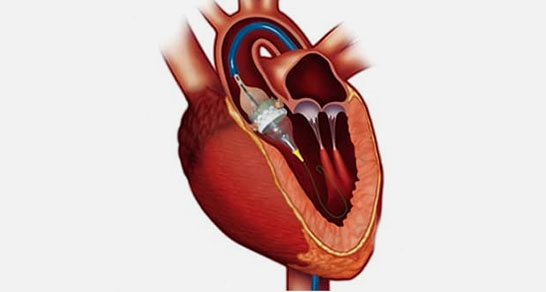 secretary@gopalamurugan.com
secretary@gopalamurugan.com +91 80560 88898
+91 80560 88898
+91 89400 88898
+91 91760 88898
 Scan QR Code
Scan QR Code
for Location
 secretary@gopalamurugan.com
secretary@gopalamurugan.com +91 80560 88898
+91 80560 88898 
 Scan QR Code
Scan QR Code 
Aortic stenosis is a common and serious valve disease that primarily affects the elderly. This condition involves the narrowing of the aortic valve, which can lead to significant heart problems and reduced quality of life. Traditional treatment has involved surgical aortic valve replacement (SAVR), a major procedure requiring open heart surgery. However, not all patients are candidates for this due to high or intermediate risk factors associated with their age or other health conditions. This is where Transcatheter Aortic Valve Replacement (TAVR) comes into play, offering a less invasive alternative with numerous benefits.
What is TAVR? Transcatheter Aortic Valve Replacement (TAVR), also known as Transcatheter Aortic Valve Implantation (TAVI), is a groundbreaking procedure designed to replace a diseased aortic valve without the need for open-heart surgery. Instead, the new valve is inserted through a small incision, usually in the leg, and guided to the heart through the arteries. This innovative approach significantly reduces recovery time and is associated with fewer complications compared to traditional surgery.
Who is a Candidate for TAVR? TAVR is primarily recommended for patients who are considered high or intermediate risk for traditional surgical aortic valve replacement. This includes elderly patients and those with multiple health conditions that make them unsuitable for open-heart surgery. A thorough evaluation by a heart team, including a cardiologist and a cardiac surgeon, will determine if TAVR is the most appropriate treatment option.
The Procedure: The TAVR procedure involves several key steps. Initially, the patient undergoes extensive imaging tests to determine the size and shape of the diseased valve. During the procedure, the replacement valve is compressed and placed on a balloon-tipped catheter. This catheter is then inserted through the incision in the leg and carefully guided to the heart. Once in position, the balloon is inflated, deploying the new valve within the diseased aortic valve. The new valve begins to function immediately, and the catheter is removed.
Conclusion: Transcatheter Aortic Valve Replacement (TAVR) is a life-changing option for elderly patients with aortic stenosis who are considered high or intermediate risk for traditional surgery. By offering a less invasive alternative, TAVR enables patients to experience a faster recovery and an improved quality of life. If you or a loved one are suffering from aortic stenosis, consult with your healthcare provider to see if TAVR is a suitable option.
This content offers a comprehensive overview of TAVR, suitable for a website aimed at patients and their families looking for alternative treatments for aortic stenosis.